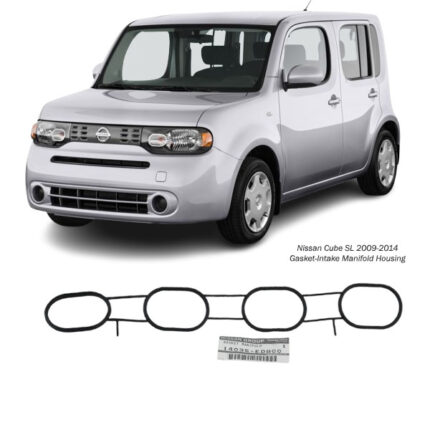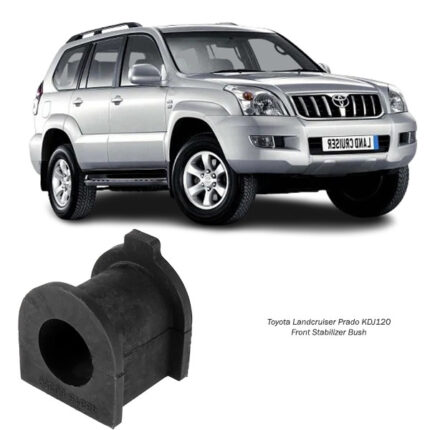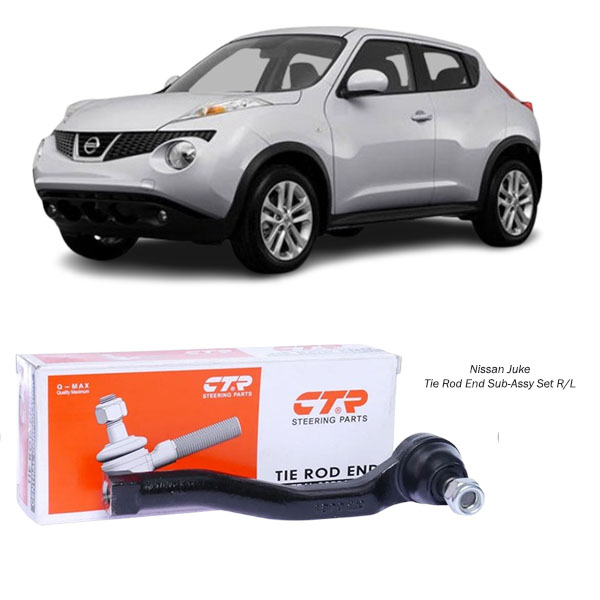-6%
Get Nissan Juke 2010- Tie Rod End Sub-Assy Set R/L CEN-153R in Kenya
The Tie Rod End Sub-Assembly Set (Right/Left) is a critical component of your vehicle’s steering system. It connects the steering rack to the front wheels, allowing for precise control and stability while driving.
If your vehicle experiences loose steering, uneven tire wear, vibrations, or strange noises when turning, it may be time to replace your tie rod ends. Failing tie rod ends can lead to dangerous driving conditions, including loss of steering control.
In this detailed guide, we’ll cover:
✔️ What is a Tie Rod End Sub-Assy Set (R/L)?
✔️ Functions & Importance
✔️ Common Symptoms of a Failing Tie Rod End
✔️ Types of Tie Rod Ends
✔️ Step-by-Step Installation Guide
✔️ Maintenance & Longevity Tips
✔️ OEM vs. Aftermarket Tie Rod Ends
What is a Tie Rod End Sub-Assy Set (R/L)? 🤔
The Tie Rod End Sub-Assembly Set (R/L) consists of right and left-side tie rod ends, which are ball-and-socket joints that connect the steering rack to the steering knuckles of the wheels.
These components play a crucial role in translating steering wheel movements into actual wheel movement.
Key Components of a Tie Rod End:
🔹 Inner Tie Rod – Connects directly to the steering rack.
🔹 Outer Tie Rod End – Links the inner tie rod to the steering knuckle.
🔹 Ball Joint & Stud – Allows the tie rod to pivot and move while steering.
🔹 Protective Boot (Dust Cover) – Prevents dirt and moisture from damaging the ball joint.
Functions & Importance of the Tie Rod End Sub-Assy Set ⚙️
The Tie Rod End Sub-Assy Set plays a vital role in maintaining steering control and vehicle stability.
1️⃣ Translates Steering Wheel Movements to the Wheels 🔄
-
When you turn the steering wheel, the tie rod ends ensure that the front wheels respond accurately.
2️⃣ Maintains Proper Wheel Alignment 🎯
-
Properly functioning tie rod ends keep the wheels aligned, preventing pulling or drifting while driving.
3️⃣ Ensures Safe & Responsive Steering 🚗
-
A worn tie rod end can cause loose, shaky, or unpredictable steering, making it dangerous to drive.
4️⃣ Reduces Tire Wear & Increases Longevity 🔧
-
Faulty tie rods cause uneven tire wear, leading to premature tire replacement.
5️⃣ Improves Suspension Performance 🛠️
-
The tie rods work closely with the steering and suspension system, ensuring smooth and controlled movement.
Common Symptoms of a Failing Tie Rod End 🚨
Since tie rod ends wear out over time due to road conditions, driving habits, and general wear and tear, it’s important to recognize early warning signs.
🔴 Loose or Unresponsive Steering – If your steering feels loose, wobbly, or sluggish, it could be due to worn tie rod ends.
🔴 Uneven or Excessive Tire Wear – A faulty tie rod affects wheel alignment, causing one side of the tires to wear out faster.
🔴 Clunking or Knocking Noises – Worn-out tie rod ends rattle or make clunking noises when turning.
🔴 Steering Wheel Vibrations – If the tie rods are loose or worn, your steering wheel may vibrate, especially at higher speeds.
🔴 Vehicle Pulling to One Side – If your car drifts or pulls to one side while driving, it may be due to misaligned or faulty tie rod ends.
🔴 Difficulty Steering or Turning – If turning the wheel requires more effort than usual, it could indicate a problem with the tie rods.
If you experience any of these symptoms, it’s crucial to inspect and replace your tie rod ends before they fail completely.
Types of Tie Rod Ends 🔬
Tie rod ends come in different types based on vehicle design and steering configuration.
🔹 Standard Tie Rod Ends – Found in most passenger vehicles, these have a simple ball joint design.
🔹 Adjustable Tie Rod Ends – Used in performance or off-road vehicles, allowing for alignment customization.
🔹 Sealed vs. Greasable Tie Rod Ends – Some tie rods are pre-lubricated and sealed, while others require regular greasing.
🔹 Heavy-Duty Tie Rod Ends – Designed for trucks and SUVs, offering enhanced durability.
Choosing the right type depends on your driving style and vehicle specifications.
Step-by-Step Installation Guide 🛠️
If your tie rod ends are worn, follow this guide to replace them:
🛠️ Tools Required:
✔️ Jack & Jack Stands
✔️ Lug Wrench
✔️ Wrench Set
✔️ Torque Wrench
✔️ Tie Rod Separator or Puller
✔️ Grease (for serviceable tie rods)
🔧 Installation Steps:
1️⃣ Lift the Vehicle & Remove the Wheel
-
Park on a flat surface and engage the parking brake.
-
Use a jack to lift the front of the vehicle and secure it with jack stands.
-
Remove the front wheels using a lug wrench.
2️⃣ Locate & Remove the Old Tie Rod End
-
Find the outer tie rod end connected to the steering knuckle.
-
Loosen the locking nut that secures the tie rod.
-
Use a tie rod separator to remove the ball joint from the knuckle.
3️⃣ Install the New Tie Rod End
-
Thread the new tie rod end into the inner tie rod.
-
Attach the tie rod stud into the steering knuckle.
-
Tighten the lock nut and ball joint nut to manufacturer specifications using a torque wrench.
4️⃣ Reinstall the Wheel & Lower the Vehicle
-
Reattach the wheel and tighten the lug nuts.
-
Lower the vehicle carefully and remove the jack stands.
5️⃣ Get a Wheel Alignment
-
After replacing tie rod ends, a professional wheel alignment is necessary to prevent uneven tire wear and poor handling.
OEM vs. Aftermarket Tie Rod Ends – Which One to Choose? 🤷♂️
When replacing the Tie Rod End Sub-Assy Set, you can choose between OEM (Original Equipment Manufacturer) and aftermarket options.
| Feature | OEM | Aftermarket |
|---|---|---|
| Fit & Compatibility | ✅ Perfect Fit | ⚠️ May Require Adjustments |
| Durability | ✅ High-Quality Material | ⚠️ Varies by Brand |
| Warranty | ✅ Manufacturer-Backed | ❌ Limited or None |
| Cost | ❌ More Expensive | ✅ More Affordable |
For best performance and longevity, OEM tie rods are recommended. However, a high-quality aftermarket set can be a budget-friendly alternative.
Final Thoughts 💡
The Tie Rod End Sub-Assy Set (R/L) is a small but essential part of your vehicle’s steering system. Regular inspection and timely replacement help prevent steering problems, uneven tire wear, and potential accidents.
Follow us on Facebook for more parts.






Reviews
Clear filtersThere are no reviews yet.